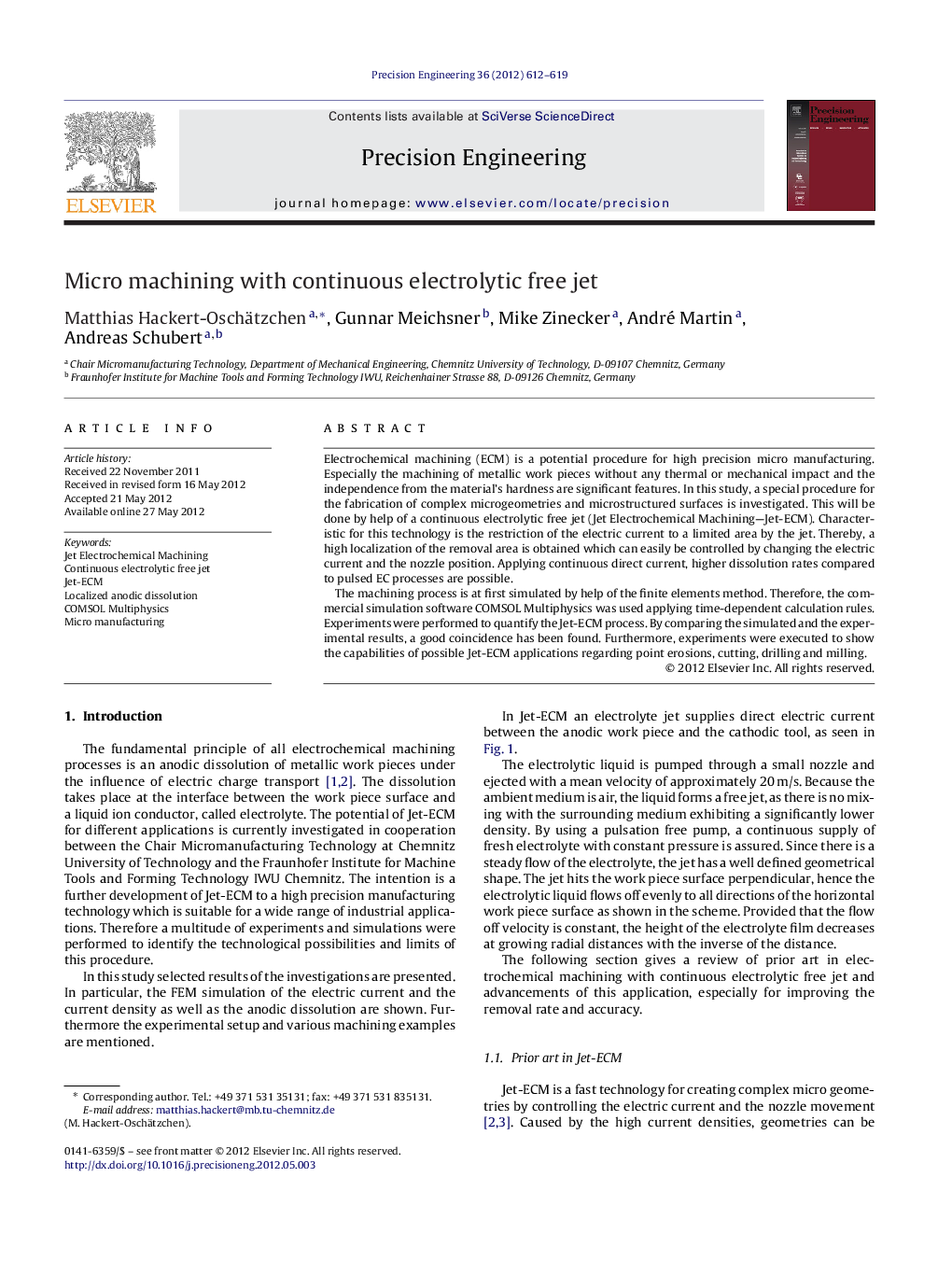| Article ID | Journal | Published Year | Pages | File Type |
|---|---|---|---|---|
| 804584 | Precision Engineering | 2012 | 8 Pages |
Electrochemical machining (ECM) is a potential procedure for high precision micro manufacturing. Especially the machining of metallic work pieces without any thermal or mechanical impact and the independence from the material's hardness are significant features. In this study, a special procedure for the fabrication of complex microgeometries and microstructured surfaces is investigated. This will be done by help of a continuous electrolytic free jet (Jet Electrochemical Machining—Jet-ECM). Characteristic for this technology is the restriction of the electric current to a limited area by the jet. Thereby, a high localization of the removal area is obtained which can easily be controlled by changing the electric current and the nozzle position. Applying continuous direct current, higher dissolution rates compared to pulsed EC processes are possible.The machining process is at first simulated by help of the finite elements method. Therefore, the commercial simulation software COMSOL Multiphysics was used applying time-dependent calculation rules. Experiments were performed to quantify the Jet-ECM process. By comparing the simulated and the experimental results, a good coincidence has been found. Furthermore, experiments were executed to show the capabilities of possible Jet-ECM applications regarding point erosions, cutting, drilling and milling.
Graphical abstractFigure optionsDownload full-size imageDownload as PowerPoint slideHighlights► Jet-ECM as a special procedure for precise manufacturing of microstructures. ► Fast generation of microgeometries with Jet Electrochemical Machining. ► Highly localized anodic dissolution. ► Good coincidence between FEM-simulations of Jet-ECM and experimental results. ► Potential of Jet-ECM for cutting, drilling and milling.
